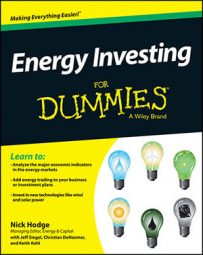For an investor trading in energy futures, choosing the right broker is a long and arduous process, and rarely will you find one early on in your search. You have a set of expectations, and the wrong choice can be costly to your portfolio.
All brokerage firms must be registered with the U.S. Commodity Futures Trading Commission (CFTC) as a Futures Commission Merchant (FCM) or an Introducing Broker (IB), and they have to be a member of the National Futures Association (NFA).
A Futures Commission Merchant can be either an individual or an organization that solicits or accepts orders to buy or sell futures contracts or options on futures and that accepts money from its clients for these orders.
An Introducing Broker can solicit and/or accept orders to buy or sell futures contracts, but with one major difference compared to an FCM: Introducing Brokers don’t accept any money or margin deposits. Basically, they solicit accounts for an FCM and bring in new clients.
If you’re new to trading futures contracts, skip the discount brokerages where you’re responsible for making all the decisions. You don’t receive as much support and may even have to do your own research. Starting with a full-service brokerage is best. The higher fees can feel burdensome at times, but you won’t regret the decision when you consider all that’s involved in doing everything on your own.
Choosing an individual broker
After making your selection, you may also have to pick an individual broker. The first three questions you should ask are:
What services do you offer, and what are your commission fees? Remember, higher fees aren’t necessarily a deal-breaker (some brokers need to make a living from their commissions).
How knowledgeable are you when it comes to the markets? Nothing is worse than paying someone who knows less than you do about the energy sector. Does the broker have personal contacts within the market that offer a good analysis into market news?
What is your track record? Although you can’t take past performance as a guarantee of future profits, knowing the broker’s track record helps sort out potential disasters. Also along this line of questioning, find out about the broker’s investing strategies and trading ideas to see whether they match your own.
Keep in mind that not everyone is looking out for your best interests. There are definitely some hustlers in the business. Having a few red flags can save you a lot of time, frustration, and most important, money. Here are some of the warning signs to look out for:
Whenever something seems too good to be true, it probably is. Be wary of promises of guaranteed profits or can’t-lose claims.
The broker insists that you can make gains from news or data that is already public.
The broker suggests that you borrow money or take out a loan to make an investment.
The broker dismisses the value of the disclosure statement, which can help you evaluate the risks involved.
The broker pressures you to make a lot of trades so he can pile up the commission fees.
Opening an account
After you nail down a broker, your next step is to open a futures trading account. Each broker may have a different process to do this, but the process nearly always involves you filling out an application, either online or through the mail.
The broker will want to know a little bit about you before you start trading futures — things like how much income you earn and how much trading experience you have.
Understanding orders
After you open an account, it’s important to know the difference among the various order types and when it’s appropriate to use each.
Don’t get overwhelmed if you’re suddenly confronted with an order type you’ve never encountered before. Individual investors usually stick to limit orders with a trailing stop-loss to protect gains, but here is a list of all the order types so you can cover your bases:
A market order indicates that you want to execute a trade immediately at the best available price. This order is a double-edged sword because, though the order is filled right away, you may regret the entry price you get. The biggest red flag for when to avoid using market orders is with low-volume trades.
Limit orders have should always be a go-to trade order because it means you’re buying at your price. These orders take a little extra attention on your part because they may not be immediately filled.
A stop order is just a market order that’s executed when a specified price is reached. When you use a stop limit, you give two prices — a stop price and a limit price. When the price surpasses the stop price, the order then becomes a limit order. Investors use this order to protect gains or limit losses on a long or short position.
You can also use conditional orders along with individual orders to strengthen your entry and exit strategy. One cancels another, or OCA orders, for example, allow you to set up a protective exit price (via a stop order) and a target exit price (using a limit order). If one gets filled, the other is canceled.

